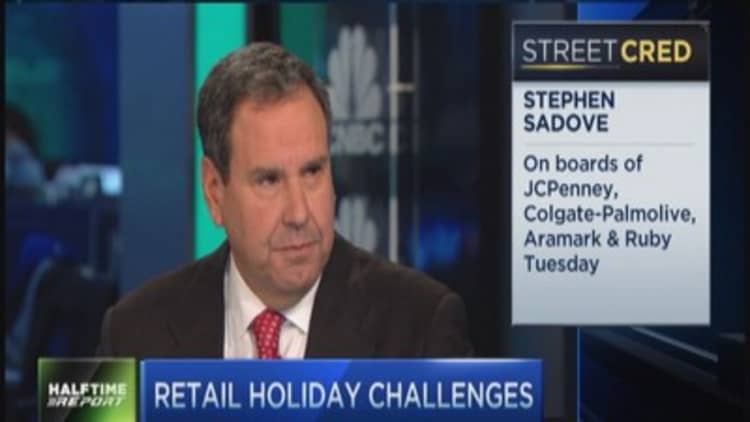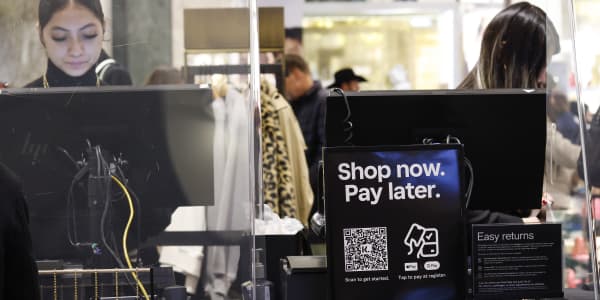How much is that doggie in the window?
Well, it'll obviously depend on which window you're buying it from—but that's not the only factor determining its price.
In the ever-complicated world of online versus in-store shopping, retailers are no longer just competing with each other for the lowest price; often times, they're also competing with themselves.
According to pricing data compiled by 360pi, Savings.com and Consumer World, prices at an individual retailer can swing wildly simply because the item is bought online instead of in-store.
Even then, some retailers' digital prices fluctuate throughout the week—even throughout the day—as they try to stay competitive with online competitors such as Amazon.
Read MoreBig retailers price white, black Barbie differently
"The most dynamic retailers change prices on 15 to 20 percent of their assortment at least once a day during normal shopping periods," said Jenn Markey, vice president of marketing at price intelligence firm 360pi. "This can easily double at peak times in key categories like back to school and the holidays."
According to Markey, Amazon and Sears are the most dynamic retailers. They can alter what they charge on 15 to 20 percent of their assortment at least one time a day during regular shopping periods. Wal-Mart falls in the midrange, changing prices on about 6 to 8 percent of its assortment on a daily basis.
Read MoreFingers crossed: Retailers allow late online orders
Staples and Apple fall on the other end of that spectrum, rarely adjusting their prices.
"Online retailers are turning to data to help them compete, and they have strategic price ranges that they play between," said Meghan Heffernan, a spokeswoman for Savings.com.

Although 360pi noted that retailers this year have done a better job resisting the temptation toward knee-jerk competitive responses, Markey said there are a number of factors that can impact the degree of price changes on a certain product or category. For one, it depends on how well established a category is. If it's relatively mature with well-established floor and ceiling prices, the price is less likely to move.
The amount of movement can also come down to an item's original price, Markey said. Items in the $10s typically fluctuate by pennies, and can be quite frequent. Items in the $100s fluctuate by dollars, while items in the $1,000s move by hundreds, but tend to occur at one point in time instead of moving up and down.
There are also time-of-day and time-of-week trends related to shopper behavior, Markey said. For example, there are more frequent price changes on video games in the evening than during the day.
Heffernan added that more popular items tend to be more volatile. That's because retailers have to react and shift strategies based on demand, so in-demand holiday gifts can be particularly unpredictable. Back in October, for example, Amazon sold the popular Disney "Frozen" Sparkle Princess Elsa Doll for as low as $19.99. The next day, it spiked to $20.39.
Read MoreQueen Elsa dethrones Barbie as top toy
Savings.com, which has been tracking the prices on 500 popular items, found the difference between the lowest and highest price on a product can swing as much as 50 percent.
"That means someone could be paying double what they could be for a holiday gift," Heffernan said.
Further complicating the issue is the fact that prices aren't always cheaper online. A recent study released by Consumer World found that earlier this year, Sears advertised a Nakamichi sound bar speaker for $199.99 with $100 in points for its loyalty members. That same day, the item was $100 more expensive online and didn't offer the bonus.
"There is no universal rule of thumb that prices are always cheaper online compared to the retailer's own brick-and-mortar store," Consumer World founder Edgar Dworsky said. "You always have to check and compare both online and in-store prices if you want the best deal."
Although these complexities can be confusing for consumers, Heffernan said they also show that retailers are ready to compete on price. It's important, however, that shoppers remember to price compare.
"It's a really good time to be a consumer," Heffernan said.




